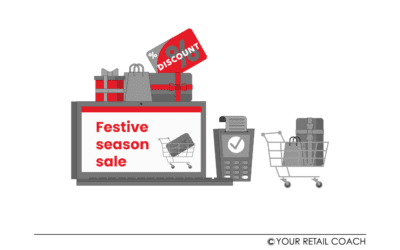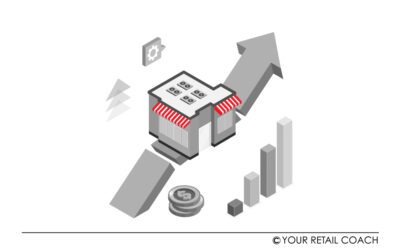Retail Business Plan
Retail Business Plan
The retail industry paves the way for an exciting way of life for millions of people across the world – providing goods and services that you and I need including food, home furnishings, medical supplies, electronic items, skilled labour etc., to name a few. Most new entrepreneurs dream of owning a small or large retail store; however, it is more important that you understand what you are in for. Retail business entrepreneurs, as in any business, should be willing to risk capital and invest time and hence make a living by offering customers something key to their daily needs. Consumers today have a plethora of options with an overwhelming sense of luxury and well-being. However, you should always keep an eye out for unexpected declines in demand due to market crashes or slowing economy which could result in curb buying behaviour of the consumers.
You may believe that your business has a distinct concept and is better than any other competitors, but are you sure about how you would launch your business into the market and satisfy the expectations of your customers? How would you drive your unique propositions to the target market? Therefore, one of the most important tasks that any entrepreneur who wishes to start a retail business should do is to create a business plan. Curating a business plan is crucial as it gives you a comprehensive one-stop view of your business and proves to you and others involved in your business idea would work or not work out in the target market and what needs to be modified.
What is a Retail Business Plan?
A business plan is a one-stop guide for your business and details all aspects of your business including what you would sell, how your business would be structured, what is your unique proposition, your target market and your financial plan. You can use your retail business plan as a roadmap that presents the growth plan of the business, its short-term and long-term goals, and how it plans to accomplish these.
The essential parts of a retail business plan include the following:
1. Executive Summary
This section offers the synopsis of your business with a description of all the key components of your business. This is where you capture the reader’s interest in your business.
2. Business Analysis
This section offers a description of the goods and services your business offers in the market, legal structure, location, target market, target customers and key competitors in the market.
3. Marketing Strategy
This section describes your key finding and analysis on your target market and customers, how you plan to penetrate your market, brand position and strategy, marketing plan etc.
4. Products and Services
This section describes what products or services you plan to provide, the supply chain network, how you plan to transport the goods or services offered, information about vendors etc.
5. Management Plan
This part includes details about your human resources, skills that you would require, explains how the store intends to be staffed etc.
6. Financial Plan
This part analyses and details the business profitability model and financial plan. It includes the cash-flow statements, income-expenditure sheet etc.
Importance of a Retail Business Plan
Apart from being a critical document for securing funding or loan from investors or banks, there are many other reasons for writing a business plan in the early stage of your business. Curating a business plan for most entrepreneurs is a splendid opportunity to take a step back and evaluate your business idea and vision, research it, understand your target market and customers and also understand the scope and strategy of your business model. Here we put down a list of reasons why you should sit down to curate a business plan for the success of your business:
1. Validate Target market and Customer Analysis
Before you take your retail business off the ground, it is imperative to get to know the playground you are in. This requires a deep look into your retail industry, competition, and geography. Defining your target market and drawing out the preferences, tastes and behaviour of your target customers enable you to see who your audience is and how you can market your products/services to them. All these details would need to be chalked out in the retail business plan so that investors would have a full overview of what your business is and where exactly it places you in the large retail market.
2. SWOT Analysis
This takes a shot at the strengths, weaknesses, threats, opportunities your brand can capitalize on and even help identify threats from nearby competitors. SWOT analysis in your business plan acts as a reference to isolate your strengths and weaknesses when making crucial decisions and enables you to stand out from your competitors.
3. Set Milestones
Writing a business plan ensures you layout milestones to shoot for in the short, mid, and long term. It defines your plan of action before you jump into setting impulsive goals at the spur of the moment. Defining your goals also ensures you conduct your business with greater agility and identify any changes you may need to make to accomplish these goals.
4. Organize Resources and Skills
Writing this section in your business plan helps you realize how feasible it is to open a retail store, hire required staff, what skills you would need for daily functioning and dive into operating costs. The business plan will serve as a primary guide to structuring your resource management and allocating staff for your retail business core processes. You will also need to chalk out your hiring processes? How do you plan to recruit staff? What are the key skills you would need to look for? What is the responsibility given for each role?
5. Validate your Financial Plan
Planning out your finances and charting them out in your business plan is one of the most crucial functions of this document if you are playing for a loan or looking into bringing on investors. A business budget is what every lender or investor would take a deep look at. You will need to detail out every nook and corner of your expenditure from our budget from insurance, rent, the expense for machinery, to your own salary. Defining your break-even analysis in your business plan at this stage, allows you to refer in the future to understand if your business is running on profits as planned. Your financial plan will include all essential documents that will help investors assess for themselves if you would be able to pay back your loan.
How YRC is helping retailers to build a sustainable business plan?
Once you are set on taking the bumpy road to grow your retail business into a huge success, your business plan would become your closest ally. If you would like to have a clearer perception of the path towards success but are unsure of how to achieve it, YRC can help guide you through the process. YRC experts shall validate your business vision and devise the critical pathways. YRC has helped bring out the best suited viable business models to many retail clients by reshaping how they look at their business. The experts at YRC work with the client and their partners in the planning stage to establish the necessary research to understand the trends affecting your business under the current market condition to lay the groundwork for and improve the potential for success.
Get Advice for Retail Business Plan
Related Blogs
Making the most out of the festive season shopping: A Customer Perspective for Retailers
Decoding the Festive Shopping Spree For us, as customers, the festive season is a licence to spend. The vibes of festivity ushers with joy and a sense of celebration. This elevated mood often turns into an enhanced willingness to spend and indulge in shopping. It is a...
Mitigating Business Risks in Retail
Spotting the Swirls Sailing the stream of retail is canopying between opportunities on the surface and risks as the current of that stream. If the bad swirls are not spotted in advance, it can turn things undesirable. While big brands grapple with issues like lapses...
How Retailers are Enhancing Customer Experience (CX) with Hyper-Localisation
Hyper-localisation is an alignment strategy that helps retail brands and businesses mould into the requirements of a locality-based market environment. Marketing-wise, it helps retailers tailor their value propositions to cover the needs and expectations of highly...





We work only for Visionaries.